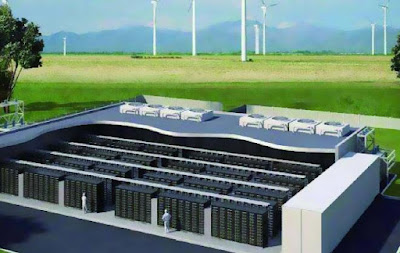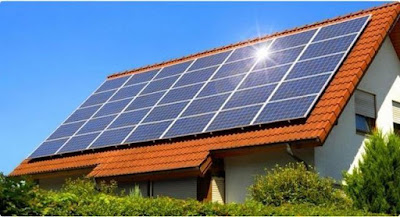Photovoltaic power supply is different from traditional power supply. Its output power changes drastically with changes in environmental factors such as light intensity and temperature, and it is uncontrollable. Therefore, if photovoltaic power generation wants to replace traditional energy sources to achieve large-scale grid-connected power generation, it has a The impact of the power grid can not be ignored.
Photovoltaic power generation has the characteristics of high output level in a short time at noon, low output level in other periods, and output during the day and no output at night. The output is transferred to other time periods to reduce the peak output of the power station and reduce the abandonment of light.
In the working process of the battery energy storage system, the principle of reducing the number of charging and discharging times of the energy storage system as much as possible is to prolong the service life of the energy storage system. During the peak hours of photovoltaic power generation, the charging of the battery energy storage system is controlled to cut the output of the photovoltaic power station. After the peak period of photovoltaic power generation, the discharge of the battery energy storage system is controlled, and the discharge control of the energy storage system can assist in smoothing the fluctuation of the photovoltaic output and assisting the peak regulation of the system to maximize the effect of energy storage. According to the different functions of energy storage and discharge, three working modes of the energy storage system can be divided, namely peak clipping, peak clipping + smoothing, and peak clipping + transfer.
Peak clipping
During the peak output period of the photovoltaic power station, the battery energy storage system is controlled to charge the battery energy storage system with peak shaving as the application goal. After the photovoltaic output peak period, and during the photovoltaic daytime output period, the battery energy storage system is controlled to amplify the power and discharge to the battery energy storage system. The lower limit of the SOE working range, and then the energy storage system stops working, ensuring that the working time of the energy storage system is within the power generation time of the photovoltaic power station, without additionally increasing the working time of the photovoltaic power station, and reducing the work arrangement of the photovoltaic power station due to the configuration of the energy storage system. Impact.
Peak clipping + smoothing
During the peak output period of the photovoltaic power station, the charging of the battery energy storage system is controlled with peak shaving as the application target. The output fluctuations of large-scale photovoltaic power plants can be divided into two categories. One is the slow change of the output of photovoltaic power plants, such as the periodic changes in the output of photovoltaic power plants caused by the alternation of day and night; A sudden drop in the output of photovoltaic power plants. The changes in the first round are large, but the changes are slow; the changes in the second type are unpredictable and sudden. In severe cases, the output is reduced from full power to below 30% of the rated value within 1~2s. After the peak period of photovoltaic output, the discharge of the energy storage system is controlled with the goal of smoothing the decrease and fluctuation of the output of the photovoltaic power station during the alternation of day and night, and the discharge reaches the lower limit of the SOE working range of the battery energy storage system. If it has entered the night, the output of the photovoltaic power station will decrease When it reaches 0, the SOE of the energy storage system is still greater than 0.2, and the energy storage system is controlled to discharge at the rated power and constant power until the SOE reaches 0.2, and then the energy storage system is controlled to stop working.
Peak clipping + shifting
During the peak output period of the photovoltaic power station, the charging of the battery energy storage system is controlled with peak shaving as the application target. The output period of the photovoltaic power station is 8:30~18:30, and the evening peak of the load occurs between 18:00~22:00. During this period, the photovoltaic power station has basically no output, which can be assisted by controlling the discharge of the battery energy storage system. System peak regulation, in order to reduce the number of actions of the energy storage system and simplify the operation of the battery energy storage system, the battery energy storage system is controlled to discharge at constant power, the discharge is at the lower limit of the SOE working range of the battery energy storage system, and then the energy storage system stops Work.
As the proportion of photovoltaic power generation systems in the power grid continues to increase, its impact on the power grid must be effectively managed to ensure the safety and reliability of power supply. The application of energy storage system in photovoltaic power generation system can solve the problem of power supply imbalance in photovoltaic power generation system to meet the needs of normal work. The energy storage system is crucial for the stable operation of photovoltaic power plants. The energy storage system not only ensures the stability and reliability of the system, but also is an effective way to solve dynamic power quality problems such as voltage pulses, inrush currents, voltage sags and instantaneous power interruptions.





No comments:
Post a Comment